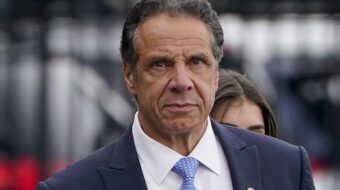One of the best English teachers I know teaches at our high school. She always draws the Senior English class assignment because she can coax out of even the most reluctant 18-year-old a solid “senior paper,” a right of passage at Federal Hocking High School. Amongst her tools is an approach to revision that goes this way: “Nice try, but you can do better, go figure out what is wrong and let me know when you do.”
This is the response I had when reading the first draft of the reauthorization proposals for No Child Left Behind put forth last week in the House. Nice try, you are beginning to figure out how deeply flawed the law is, but maybe you weren’t paying attention when educators told you what needed to be fixed. Go back to your notes, figure it out, and let us know when you do.
There are a few steps in the right direction in the draft. Forum for Education and Democracy Convener Linda Darling-Hammond, in her testimony to the House Education Committee points those out. In particular, the allowing for multiple measures of student and school success is a beginning — that should be expanded in any amendments rather than cut as many of the so-called “education groups” in D.C. will demand. But overall the bill misses the mark when it comes to equity, engagement and community. In the spirit of not giving students more than they can handle at one time, this week’s edits begin with the issue of equity.
Just this week we are again reminded of how inequitable school funding is across this nation by a story in the Akron (Ohio) Beacon Journal. Two schools, four miles apart, one with the appearance of a college campus, complete with well-landscaped grounds, built in 2003 at a cost of $37 million. The other, serving primarily children of color and poverty, with trash cans in the halls catching leaking rainwater and a tarp stretched over the front of the building to provide shelter when kids arrive. While the condition of a building does not tell the entire story about the education within the walls, it does tell you which children we value as opposed to those we do not.
Leave it to our plainspoken friends in Kansas to make the picture clear. In an editorial in the Tulsa World, senior editor Ken Neal points out that, “When most poverty is factored out of U.S. public school performance, U.S. schools rank No. 1 in the world. Since the U.S. has the highest childhood poverty among the competing nations, what does that say about the schools? About the nation? It says that poverty is the biggest problem of the schools and that poverty, not schools, is the biggest problem in the U.S.”
But does NCLB, or any other federal policy, even begin to address this issue? Nope.
Nothing in the law demands that school funding be equalized, that experienced and successful teachers be equally distributed, or that schools not be allowed to be segregated by socioeconomic status. We have pointed out earlier that simply passing the Student Bill of Rights, which makes moving to school funding equity in the states a requirement for receiving Title I funds, would put the country on track to begin honestly dealing with the disparate funding in our schools. And let’s be honest, it is the schools that our students of color and our children in poverty attend that get the shortest end of the stick when it comes to resources.
Of course, it is not only in schools that we see this. Last month the administration posted rules that will limit eligibility for families to receive subsidized health care. How I wish the bean counters in D.C. would have to sit with me while a young woman in my school battles to breathe through another asthma attack because her family cannot afford to refill her inhaler prescription at the end of the month.
The American public, as reflected in poll after poll, knows that curing poverty by simply demanding better test scores is not the answer. Testing is not investing. And any federal education policy that ignores that fact is doomed to merely rank more schools as failures, while doing nothing to improve the lives of our nation’s neediest children.
When the federal government first became involved in public schools it was as part of Lyndon Johnson’s War on Poverty — with schools as but one tool in the arsenal against want. Today we seem to have declared unilateral surrender, pulling back all the proven weapons at our disposal in favor of merely demanding that children all test equally.
America owes its underserved communities a growing educational debt, one that Forum Convener Gloria Ladson-Billings has spoken and written so eloquently about. The authors of the House NCLB reauthorization now need to get busy and revise their draft. Let’s hope they do their homework and address the real gaps in America’s educational system: those that separate the poor from the rich in terms of the educational opportunities they are given.
George Wood is director of the Forum for Education and Democracy, and principal of Federal Hocking High School in Stewart, Ohio. This article is reprinted from the forum’s web site,









